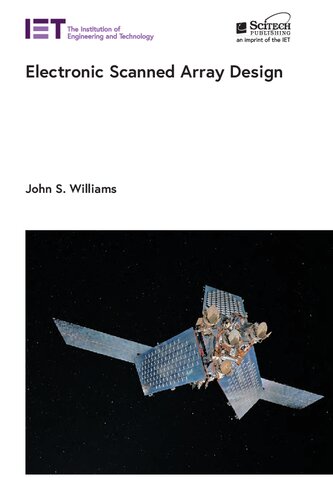

Most ebook files are in PDF format, so you can easily read them using various software such as Foxit Reader or directly on the Google Chrome browser.
Some ebook files are released by publishers in other formats such as .awz, .mobi, .epub, .fb2, etc. You may need to install specific software to read these formats on mobile/PC, such as Calibre.
Please read the tutorial at this link: https://ebookbell.com/faq
We offer FREE conversion to the popular formats you request; however, this may take some time. Therefore, right after payment, please email us, and we will try to provide the service as quickly as possible.
For some exceptional file formats or broken links (if any), please refrain from opening any disputes. Instead, email us first, and we will try to assist within a maximum of 6 hours.
EbookBell Team

4.3
58 reviewsElectronic Scanned Array Design covers the fundamental principles of ESA antennas including basic design approaches and inherent design limitations. These insights enable better appreciation of existing and planned ESA systems including their application to earth observation. The material describes general design principles of aperture antennas applied to the specific case of ESA design.
System applications are discussed to set the framework for requirements allocation and flowdown. Specific examples are cited throughout to relate theory to practice. The book begins by introducing the concept of electronic scanned arrays, giving a brief history of the technology and outlining its scope and applications. Further chapters cover antenna principles; synthetic arrays; antenna figures of merit; mutual coupling effects; errors and tolerances; grating lobes; thinned arrays; beam width and sidelobes; beam shaping and spoiling; reflector applications; design practice; radiating elements; T/R modules; assembly, packaging, power and thermal management; technology base and cost; and ESAs in space. The final chapter offers a comparison between an ESA and a reflector, exploring their benefits, detriments and design trades.
The book will be invaluable for radar and antenna engineers and researchers, and advanced students studying ESA design.